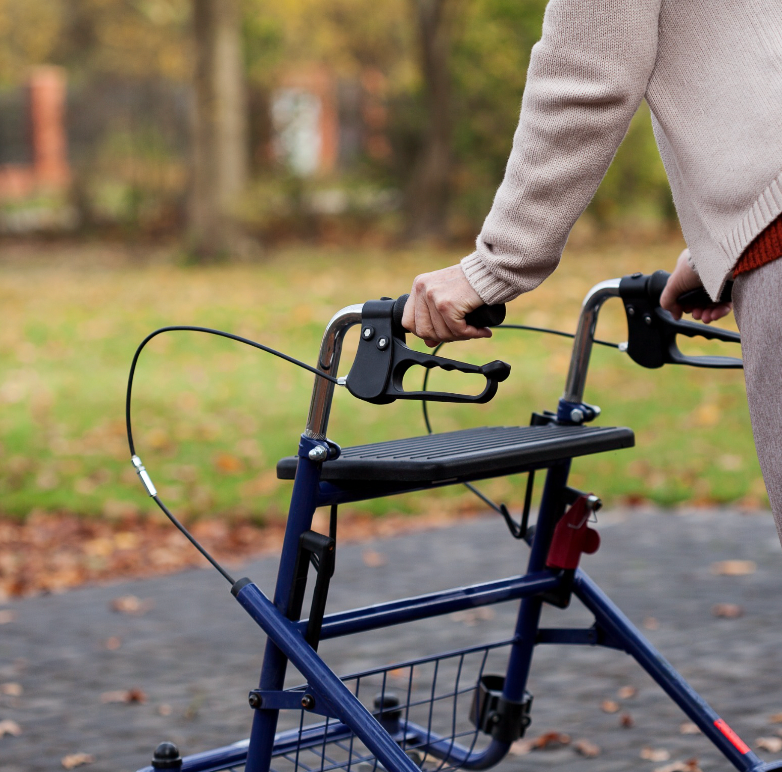Home modifications can reduce falls by 55%, giving your members the ability to live in their own homes safely & more independently.
Studies have revealed compelling evidence supporting the positive impact of occupational therapy (OT)-led home modifications. Utilizing the expertise of an occupational therapist when modifying the home can lead to a:
These studies point to the reality that modifying the home environment can result in a variety of positive health outcomes, beyond just reducing fall risk. However, many health plans struggle to implement a home safety benefit that truly shows improvement of member health outcomes. This is often because the challenge lies in determining not only how to build a thoughtful program but one that targets specific member populations to track improvements overtime.
And while all members can benefit from simple modifications such as grab bars or additional lighting, there are specific populations that often feel the greatest impact of these small yet life-changing solutions.
Diving into research studies and our own data at Jukebox Health provides insights into why a targeted benefit can be most valuable for health plans & members. Below are three main member populations that we believe greatly benefit from OT-led home evaluations and home modifications.

Members with Chronic Conditions
According to the NCOA Center for Healthy Aging Falls Database, “over 67% of falls prevention program participants indicate that they have multiple chronic conditions.” Our experience here at Jukebox Health aligns with this data; nearly 60% of the home safety evaluations we conduct are for individuals living with at least one chronic condition.
In fact, the majority of chronic conditions correlate to an increased risk of falling. This includes:
- 38% of older adults with diabetes report at least one fall
- 55% of people with COPD are more likely to experience a fall
- 48% of those with Parkinson's fall within 3 months of diagnosis
- 65% of people with Dementia experience a fall within 12 months of diagnosis
For individuals with chronic conditions, the home environment plays a significant role in their overall well-being and safety. Home modifications create a supportive space that reduces fall risks but also establishes independent living - something many with chronic conditions desire to regain. By implementing fall risk interventions as an SSBCI program, it becomes possible to empower members, regardless of their condition, to navigate their home environment safely.
To learn more about the link between chronic illness and fall risk be sure to read our post that explores this topic.
Members Who Are Returning Home Post-Fall
54% of older adults are concerned about their “home not being prepared” post-discharge from the hospital. This concern is valid, as only 6% of homes are equipped for aging in place, leading to a startling 36 million older adults reporting a fall each year.
For members returning home from a fall or medical incident need their homes modified to account for functional decline. Not only do they need it; they actively request it. The majority of the cases we interact with are those that need modifications installed within 2 weeks; as many of these cases are those who have just been discharged from the hospital. Implementing a home safety benefit into your preexisting discharge and transitions programs is a great way to better serve this population.

Members Who Are Personal Caregivers
Home modifications not only benefit those at risk of falls but also aid caregivers tending to aging loved ones at home.
More than 20% of Americans are caregivers, having provided care within the past 12 months. Tailored home modifications, such as grab bars or ramps, ease caregiving tasks and reduce stress. And as caregivers age, these modifications help them manage their own health. Integrating home modification benefits for your plan's members that find themselves in caring for a loved one can help them maintain their own well-being & safety around the home.
On average, caregivers spend more than 24 hours a week caring for their loved one, with a quarter of personal caregivers (23%) report providing 41 hours or more of care per week. All this time adds up to a burden of care that affects caregivers broadly, with 40% of them reporting high levels of stress.
Properly chosen and installed home modifications play a crucial role in effectively aging at home. A home environment customized to individual needs not only reduces stress for the member actively using the modifications but also for their personal caregiver, who might be your member as well.
Jukebox Health Can Help
At Jukebox Health, our primary focus lies in addressing the safety of the home environment. Our mission is to empower everyone to live safer, healthier and more independent lives at home. That’s why we are dedicated to identifying and effectively mitigating hazards and fall risks in the home.
If you and your plan are seeking to optimize program design & integrate a scalable home safety intervention that addresses fall risk, SDoH concerns and more be sure connect with our partnership team at hello@jukeboxhealth.com. We would be honored to share more about our solution and see how a tailored benefit could help your members.







